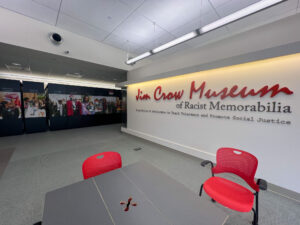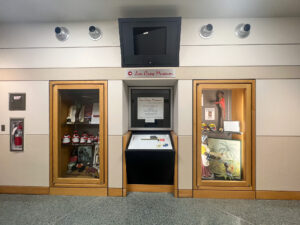Why was the Jim Crow Museum made?
I spent more than four decades collecting segregation-related
objects and everyday objects that mocked and belittled African Americans. I collected these items because I believed that objects, even hateful ones, can be used as teaching tools. In the mid-1990s, I donated the artifacts to Ferris State University, where I served as a sociology professor. Later, we used the collection to create the Jim Crow Museum. Today the museum is the largest collection of publicly accessible racist objects in the United States. Our tagline doubles as our vision: “Using objects of intolerance to teach tolerance and promote social justice.”

What is the purpose of the museum?
Woodbridge Nathan Ferris, the founder of our university, was committed to making this world better. That is a commitment shared by and lived out in the work of the Jim Crow Museum. We take objects that were meant for harm, contextualize their role in our nation’s past, and use them to facilitate the conversations that will help us, Americans, avoid old mistakes. The museum is my life’s work, but more importantly, it is an academic resource for Ferris students and students from across the nation—and it is an anti-racism resource for people and organizations working to create a more just society.
What was the timeline for building it and
getting it set up?
In 2012, we opened the current iteration of the Jim Crow Museum on the lower level of the FLITE building. When we opened, we had about 8,000 objects on display. Today, the museum has more than 20,000 objects, and thousands of objects are added each year.
There are rumors of a new building,
would you guys expand on the museum?
The creation of a new Jim Crow Museum is a top priority in the University’s Master Plan. We are in the fundraising stage and hope to break ground in a couple of years.
Where is the new building going to be placed?
The new museum will be located at the entrance to Ferris State University. That will send a powerful message about the University’s commitment to inclusion, equity, and racial justice. It will echo the work of our founder, Woodbridge Nathan Ferris, who was committed to racial justice long before it was normative—or even safe to live those ideals.

Why is the building being moved?
Our collection has outgrown the current space—and the current facility does not allow us to be good stewards of the objects that have been entrusted to us. We are located on the lower level of a building that is susceptible to flooding. A recent flood destroyed some of the objects that I collected decades ago.
It will be fully equipped to properly handle the entire collection, including a state-of-the-art archive and research component. The centerpiece of the new building will be a 7,500-square-foot permanent exhibit dedicated to the large-scale display and interpretation of the most compelling museum assets. We will use exhibits to tell the story of Jim Crow and civil rights in the North. We will show how African Americans used achievements and activism to push back against Jim Crow. And, we will tell the stories of individuals, from all races, who spent their lives fighting against injustice.
